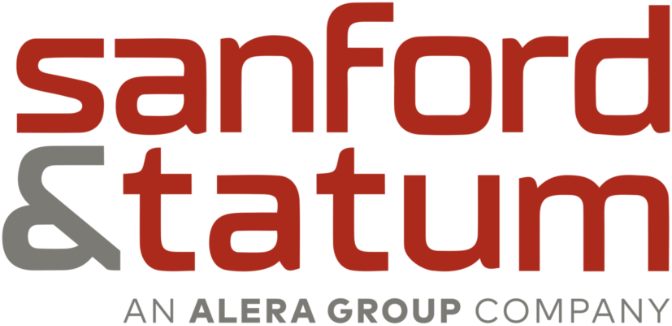
The Role of the Board of Directors in Risk Management
The scale of risks facing organizations is multiplying. Challenges such as political instability, economic volatility, evolving regulations and cybersecurity threats can result in significant financial losses if poorly managed. As such, robust risk management is a critical component of corporate governance.
This article explores the board of directors’ responsibilities in risk oversight and offers practical advice for improving board effectiveness in managing organizational risks.
Defining the Board's Role in Risk Management
The board of directors plays a crucial role in identifying, assessing and mitigating risks that could impact an organization’s strategic objectives. Effective risk management preserves stakeholders’ interests, aids compliance and enhances decision-making, ultimately minimizing losses and fostering growth.
While the board ensures that risk management practices align with business strategy, it does not handle the day-to-day risk operations. Instead, it regularly discusses risks and delegates oversight responsibilities to a subcommittee, typically an audit or risk committee.
Although risk management is a collective responsibility, the board sets the organization’s risk appetite, monitors risk governance frameworks and maintains accountability and transparency in risk-related decisions.
Key Functions of the Board in Risk Management
Boards have several significant risk oversight functions essential for maintaining organizational resilience and achieving strategic objectives. Consider the following key responsibilities:
Establishing Risk Appetite
Boards are responsible for establishing the organization’s risk appetite—the level and type of risk the company is willing to accept in pursuit of its objectives. Striking the right balance is essential. Excessive risk can expose organizations to harm, while an overly cautious approach may hinder innovation and growth. For example, investing in a new product involves financial risks but also creates opportunities to reach new customers and markets. Avoiding business risk altogether is neither practical nor beneficial.
Defining risk appetite is crucial for connecting risk management with business goals. Different risk levels can either aid or impede organizational objectives. Boards should consult stakeholders, regulators and partners when developing risk appetite and publish measurable risk thresholds in a risk appetite statement, against which they can hold themselves accountable.
Risk Identification and Assessment
Boards are responsible for overseeing the identification of material risks, communicating these to senior executives and board committees, and monitoring the creation of mitigation strategies. For instance, poor company culture—an internal risk—can be assessed through several metrics: exit interviews, employee complaints, and absenteeism rates. The board’s job is to work with the wider management team to implement and assess these processes.
Boards should not only identify current risks but also scan for emerging threats, such as cybersecurity vulnerabilities or environmental, social and governance concerns, to stay informed and prepared.
Monitoring Risk Management Systems
Once risk management strategies are in place, boards oversee the continuous assessment of risk systems and contingency plans. This includes engaging with senior management and stakeholders about risk expectations and ensuring management’s mitigation plans are feasible and aligned with business objectives. Boards must also ensure the organization has sufficient resources, systems and controls for effective risk management.
Promoting a Culture of Risk Awareness
Boards oversee the cultivation of risk awareness across the organization. This involves clearly communicating the importance of risk management to the executive team and all employees. By setting the tone at the top, boards model accountability and reinforce the value of responsible risk-taking. They also ensure that employee incentives, such as bonuses and recognition programs, align with the organization’s risk appetite. Incentives that support risk-aware behavior help ensure that employees make decisions in line with the company’s long-term goals and risk tolerance.
Enhancing Board Effectiveness in Risk Oversight
Boards can consider the following three tips to enhance risk oversight effectiveness:
- Develop skills and expertise. Boards should ensure they have sufficient technical ability to understand the risks and financial elements critical for organizational success. This includes having directors with industry-specific knowledge and financial expertise, as having members with diverse skill sets allows for different perspectives on risk. In addition, boards should implement robust training programs to improve workforce understanding of risk management processes and emerging risks. These programs help integrate risk management into the company culture, ensuring all employees are aware of and prepared for potential challenges.
- Maintain structured communication. Boards should maintain structured communication for effective risk oversight. They should ensure robust dialogue between board members and management regarding key risks so all parties know and can address potential issues. This includes setting expectations for risk reporting, asking probing questions and fostering a transparent environment. Documentation of these discussions through meeting minutes and corporate records helps ensure transparency and supports sound governance.
- Conduct regular evaluations. Boards should regularly evaluate risk management structures to adapt to the evolving business landscape. They should periodically reassess these structures to ensure the organization remains resilient and responsive to new challenges. Boards should benchmark internal assessments against external standards or industry reports to identify areas for improvement and ensure best practices are being followed. This continuous evaluation process allows boards to stay ahead of emerging risks and maintain effective risk oversight.
Conclusion
Effective risk management is crucial for maintaining organizational resilience and achieving long-term success. By establishing risk appetite, identifying and assessing risks, monitoring systems and fostering a risk-aware culture, boards can enhance their oversight capabilities, minimize losses and reduce exposures.
Contact us today for more information.
For informational purposes only. Not intended as legal advice. © 2025 Zywave, Inc. All rights reserved.

Discussion
There are no comments yet.